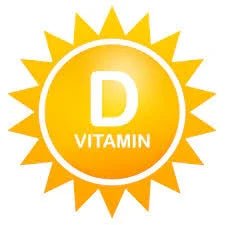
Use the cold to lose weight
Even though winter temperatures regularly drop below freezing, we hardly notice it because we spend most of our time indoors. There, we turn up the heating, enjoy hot drinks, and wear warm slippers. And when we do go outside, a comfortable winter outfit protects us from the cold. But it hasn’t always been this way …
For years, the advice to fight obesity has simply been “eat less, move more.” But this has not made much of a difference, as the obesity epidemic continues to spread. A logical question then is: does this advice actually hold up, or are there missing links?
Of course, unhealthy food will never help with weight loss, but using calories as the sole measure is illogical. Calorie counting doesn’t work for most dieters in the long term – after 3–5 years, many are back to square one.
The calories the body burns are not the same as those it consumes. The science of energy balance and weight loss is much more complex than “energy in = energy out.” In fact, traditional hunter-gatherers move about as much as we do daily. Our current energy expenditure also matches that of other wild mammals. Clearly, the current advice is incomplete – otherwise the results would be better.
We no longer know cold and hunger
Looking at nature quickly provides new insights to fill the gaps. It becomes clear that modern humans differ in behavior from other mammals. Wild animals don’t exercise to burn excess energy. They face seasonal food availability and cold exposure. Over our 7 million years of evolution, cold has shaped our bodies. Genes and physiological adaptations emerged to help us survive winter, driven by two seasonal challenges: less food and (mild) cold stress. These genes influence body composition – but they need to be “switched on.” The absence of winter may well be part of our problem.
On an evolutionary timeline, only the last 2.28 cm of 1.6 km represents the period in which we overcame both seasonal challenges. Constant warmth and constant feeding seem to harm both humans and their pets.
Brown adipose tissue (BAT), the special fat
Reintroducing (mild) cold stress into daily life – ideally combined with seasonal eating – is therefore an effective tool. Not only in the fight against obesity, but also as a general health intervention. Our eccentric compatriot Wim Hof recently demonstrated this in collaboration with Radboud University Nijmegen. Yet scientific research into the effects of cold has been ongoing for decades, and the findings are broad.
Many of cold’s effects on body composition come from stimulating the production of a special type of fat: brown adipose tissue (BAT). Interest in this tissue is rising because it is seen as a key weapon against obesity and metabolic disorders.
Brown fat is unique because, compared to white fat, it contains huge numbers of mitochondria. This allows it to burn large amounts of energy to keep the body warm – thermogenesis. It’s so effective that babies rely on it, and animals with plenty of brown fat hardly ever become obese. Adults also have this calorie-burning fat.
Brown fat is located in the upper chest, both front and back. In winter, it generates heat to stabilize core temperature and protect vital organs. Babies and hibernating animals have more brown fat because their heat demand is greater. Only five years ago did researchers discover that adults have it too. More brown fat means a leaner body.
Unlike “bad” white fat that people try to lose in the gym, brown fat is packed with mitochondria – the cell’s powerhouses. Its color comes from this abundance. People with more brown fat tend to be leaner and have lower blood sugar levels.
The strongest physiological stimulus for brown fat
Until recently, it was thought adults had no brown fat. Today we know: only overweight adults have none or less active brown fat.
Since energy cannot be created from nothing, brown fat must draw on a source to generate heat. In humans, the obvious source is stored white fat in areas like the belly and thighs. Brown fat is essentially an internal furnace that burns stored body fat.
(Mild) cold exposure is the strongest physiological stimulus for activating and increasing brown fat – and thus an indispensable tool in the fight against obesity. Used strategically, it is a simple, cost-free intervention, easy to integrate into daily life – and it even saves heating costs! The next time cold wind gives you goosebumps, embrace it: you are burning white fat and building brown fat.
How do I apply it?
Temperatures don’t need to be extremely low to experience the benefits of cold stress. The exposure time is longer than an average workout, but this should not be a problem. Research shows that benefits begin at 15–15.5 °C with 2–6 hours of exposure. Sleeping in a room of 18.8 °C or cooler has the same effect.
The more often, the better. For enthusiasts, the following methods are also highly effective and invigorating:
- Cold showers
- Cold baths or swimming
- Driving with open windows without a coat
- Local cooling with ice packs (not directly on the skin!)
- Lowering the heating by a few degrees
Note
This blog post does not downplay the wide-ranging health benefits of exercise, calorie reduction, or lifestyle changes. Nor do we suggest that diet and exercise cannot lead to weight loss. The purpose of this article is to highlight a missing piece and encourage readers to think about the complexity of weight loss and energy balance.


